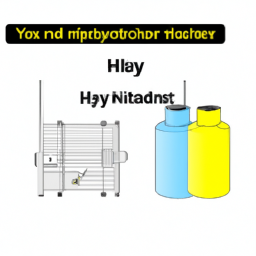Hydrotest Paintball Tank Where To
Where To Hydrotest Paintball Tank
A Journey Through Hydrotesting a Paintball Tank
Hydrotesting a Paintball tank is a necessity to ensure safety and to be allowed to continue to use it. Let's take a deeper look at the face dive into a comprehensive exploration of the topic with 8-12 pivotal themes.
Vital Safety Subterfuges
The most essential and foremost action before hydrotesting any paintball tank is to ensure that it is free from any potential issues. Checking for damages on the outside and identifying any dangers with specific regard to the tanks testing categories is a great place to start. As a matter of safety it is advised that a new tank be tested at the very least every 5 years. As a part of hydrotesting, a stamp should be placed on the tank noting the date of the most recent hydrotest.
Taking proper safety measures such as making sure the tank is dry before testing and cold after testing, is also paramount. Afterwards excess pressure needs to be vented properly and the changes reflected in the inspection stamps.
Detection of Malfunctions and Deterioration
When hydrotesting a paintball tank, specific attention should be given to detect if it has experienced undue wear-and-tear or any underlying malfunctions that may cause it to not be up to the proper standards. This extensive research should be done with the proper materials and staffed personnel in order to ensure the results are reliable and trustworthy.
The Correct Hydrotesting Process for Paintball Tanks
The proper hydrotesting process for a paintball tank must be strictly followed in order to ensure it is done to satisfaction. First, the tank must be completely emptied of all paintball carbon dioxide. If left within the tank this can put it at risk of over pressurization during testing and cause it to not pass the hydrotesting or even worse, explode under the pressure. Furthermore, it is advised that the paintball tank is visually inspected to look for any signs of cracking, corrosion, or visual abnormalities that would indicate a dysfunction in the tank.
Furthermore, the correct hydrostatic pressure must be applied. This pressure must held in a steady manner for a certain amount of time, often 15 seconds, to determine the tank's ability to handle pressure. This can be done by using a calibrated pressure Gauge, designed to accurately measure the amount of pressure applied to the paintball tank. Lastly, the paintball tank must then be vented properly to ensure that the pressure is reduced to a safe level.
Critical Milestones to Keep In Mind
Looking back at the history of hydrotesting, it brings about an interesting perspective. It was established that tanks that were manufactured before 1995, have certain standards to maintain. Tanks that have been in use for 25 years or longer must undergo a visual and hydrostatic testing every 5 years, and once again in the 15th year. Within Europe it is mandated that tanks must be hydrotested every 5 years.
Hydrotesting is regulated in many places, although the strictness of the regulations depend on the country, even on an individual state basis. Anyone performing the hydrotest must have the appropriate credentials and certifications in order to do so. Currently, many countries are adopting regulations from the US department of transportation, which is the highest standard for hydrostatic testing.
Gaining Access To Quality Equipment
In order to properly hydrotest a paintball tank, appropriate and quality equipment is essential. Since different tanks are designed to withstand varied pressures and levels, it is necessary to obtain the proper apparatus to keep the tanks safe and in use.
The Specter Of Price With Regards To Hydrotesting
In terms of cost, most hydrotesting companies usually charge based on the type of tank. The price also increases based on the number of tanks that are being tested, as it is usually done in batches. Generally the cost of hydrotesting a tank can vary anywhere from $35 to $135 depending on the company and the type of tank.
Insights
We have explored the many aspects related to hydrotesting a paintball tank including safety checklists, essential equipment, and key milestones as well as costs associated with the process. Knowing the history and compliance regulations is pertinent in order to ensure that all tanks are tested and approved. The do-it-yourself, home version of hydrotesting paintball tanks is not recommended and due to the risk of potential dangers it is best left in the hands of certified personnel.
Hydrotesting paintball tanks is a critical process for player's safety and is the only surefire way for a tank to last a long period of time. Understanding the details of each step is vital to make sure that all tanks are up to standard and compliant with regulations.

Previous Page
